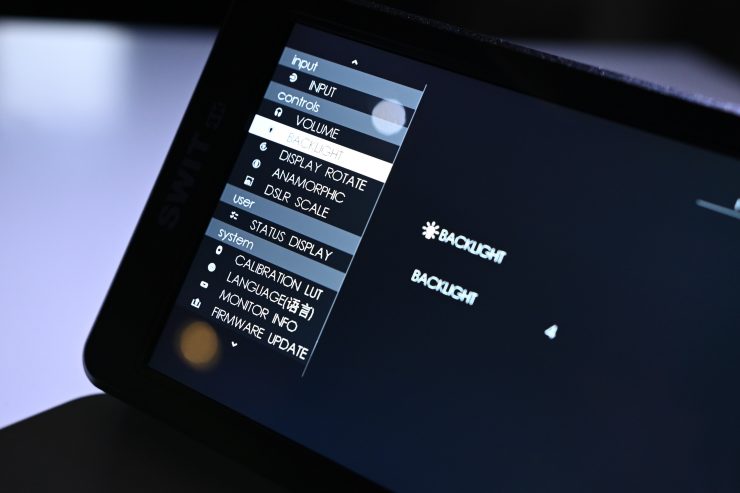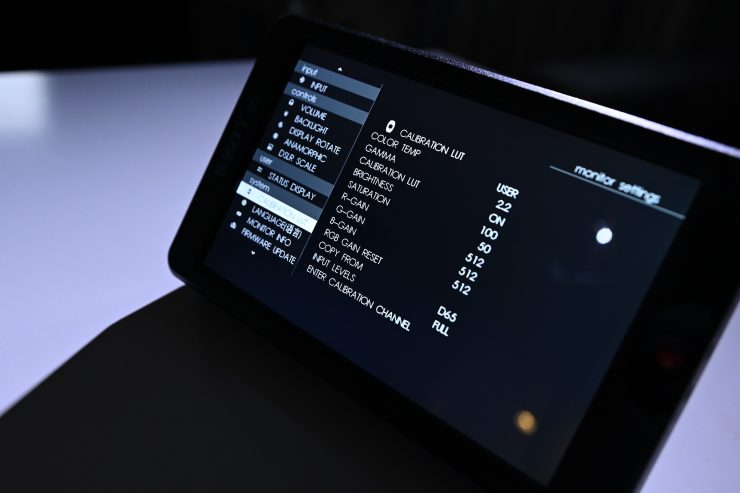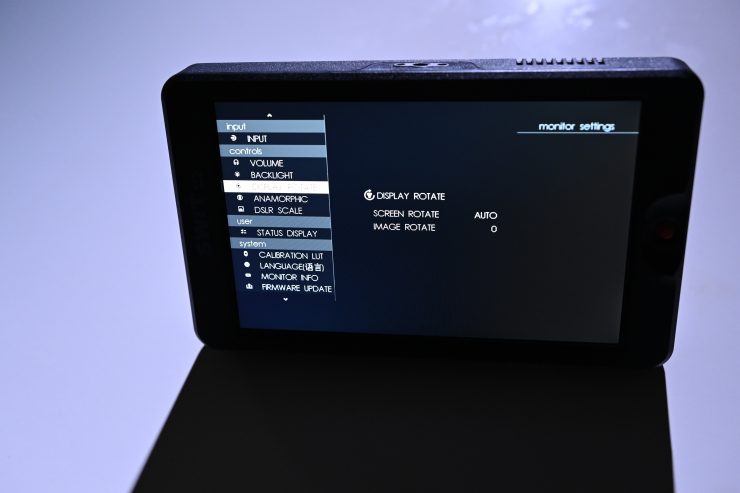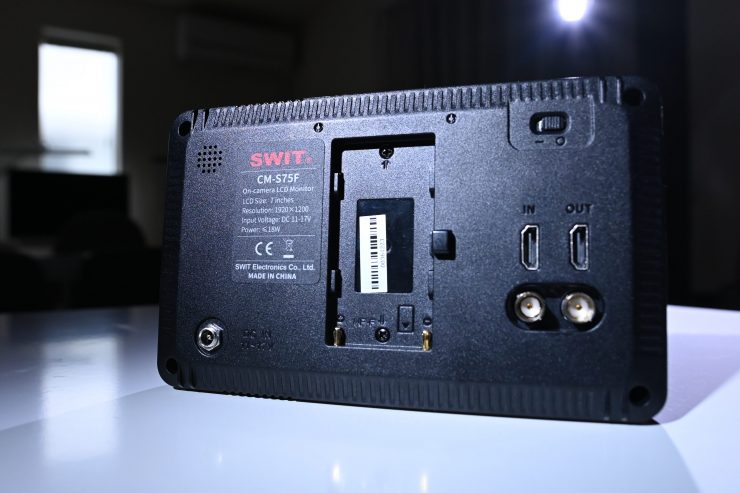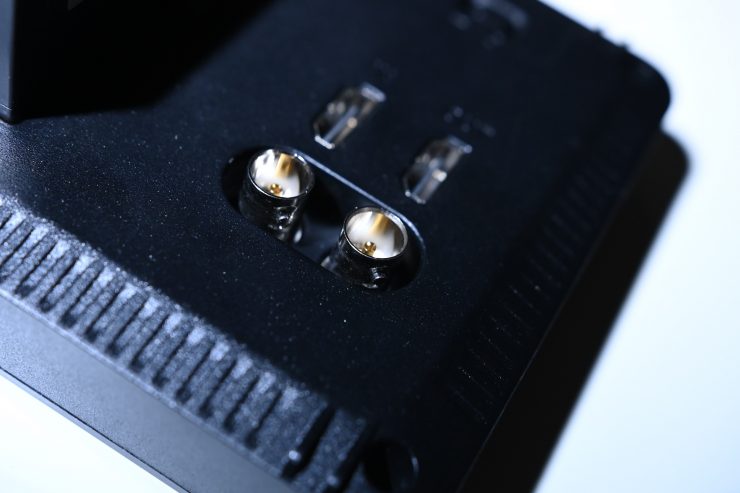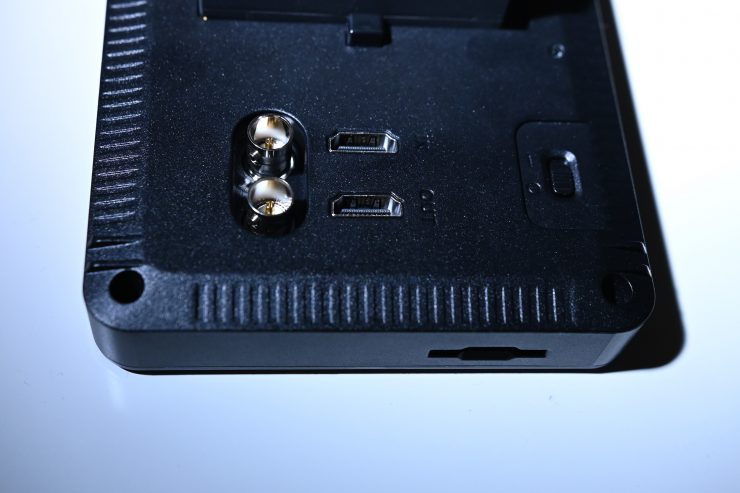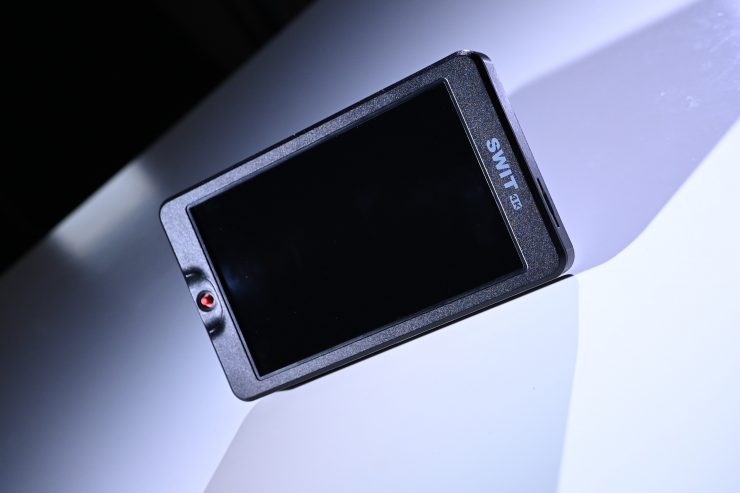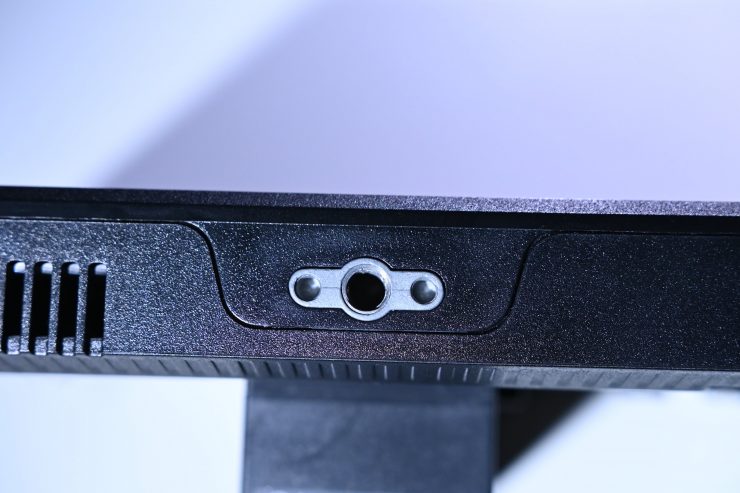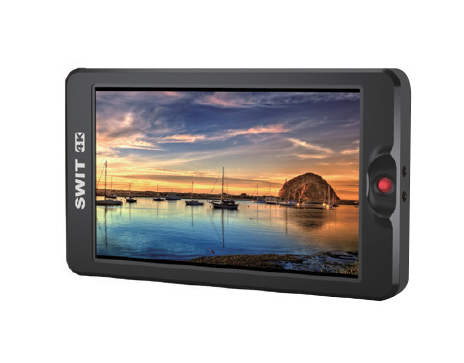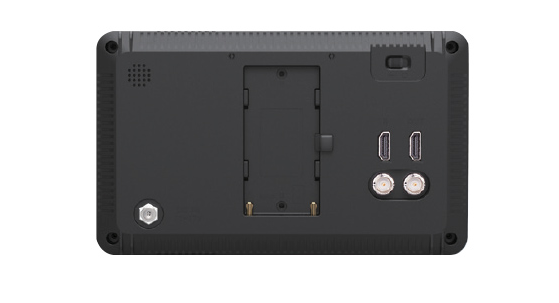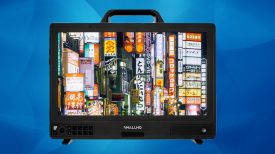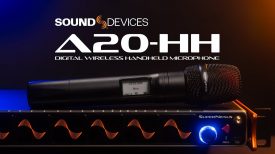
The SWIT CM-S75C 7-inch Full HD High Bright LCD Monitor is the latest offering in an already crowded market.
7″ is a popular size for onboard monitors for use with digital cinema cameras. I was interested to see how the SWIT measures up against other options that are also available.
We first saw the monitor at NAB earlier this year, and it certainly quelled my interest. For me personally, the four main things that an on-camera field monitor must have are:
- Color accuracy (the colors need to look like they do through my EVF)
- Build quality
- It needs to be bright enough to use outdoors in most conditions
- A good, intuitive menu system and OS
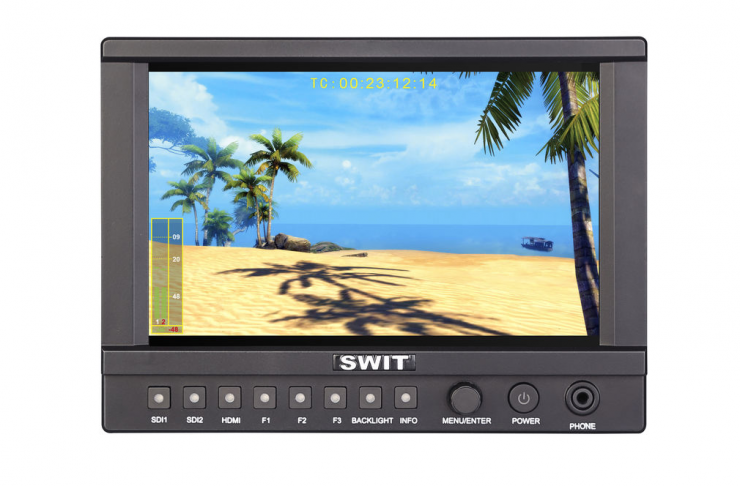
The SWIT S-1073H 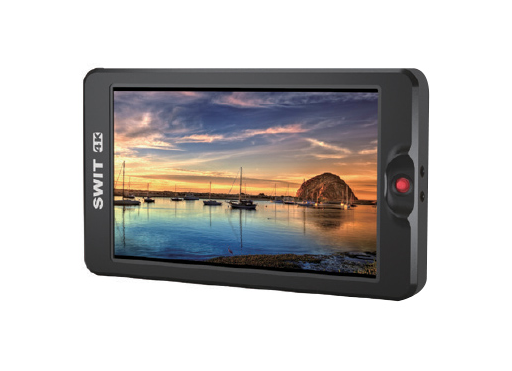
SWIT CM-S75C
The CM-S75C 7″ Full HD (1920 x 1080) monitor is quite a change in direction for SWIT. It has a more modern and streamlined design unlike the companies S-1073H which looked like it was from the ’90s.
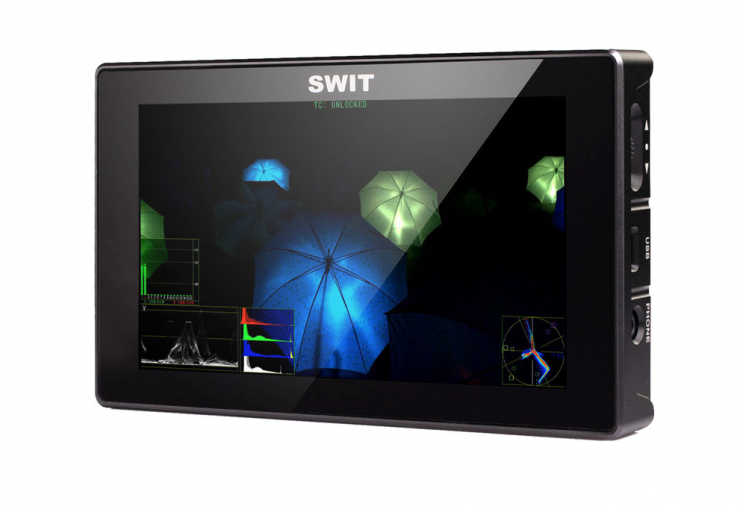
The design of the CM-S75C is more in line with the companies SWIT S-1053F 5.5″.
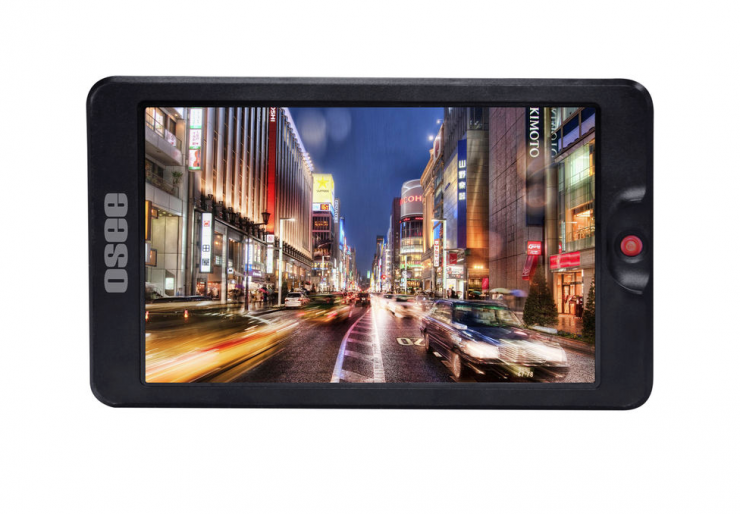
The SWIT CM-S75C is also sold as the OSEE G7 7″ 4K HDMI/3G-SDI Super Bright Field Monitor. Both SWIT and OSEE co-developed the monitor.
Key features
- Resolution 1920 x 1200
- Brightness 3000 cm/m²
- Supports 4K signals
- SDI Input/Output
- 4K HDMI Input/Output
- 3D LUTs
- 30 built-in camera Log to Rec 709 conversion LUTs
- Custom False Color
There is a lot more to a monitor than the screen
It’s not that hard to come up with a reasonably good looking screen these days and be able to sell it for a few hundred dollars. The problem is there is a lot more to a monitor than just the display. It’s the software and the OS that separates the good and great monitors from the ok ones.
Sure you could go and grab a pretty decent 7″ high bright monitor for under $500 USD, but have a good close look at its monitoring tools and operating system. Most so-called “affordable” monitors leave a lot to be desired on this front.
At the end of the day, a monitor or an EVF is how we judge everything we shoot. Why on earth would you not want to use the best possible option you can afford. A good chef isn’t going to buy an expensive oven and then throw a frozen TV dinner in there and expect it to taste like a freshly made one using quality ingredients. Do you really want to use the equivalent of a frozen TV dinner as your sole monitoring option?
It’s certainly bright
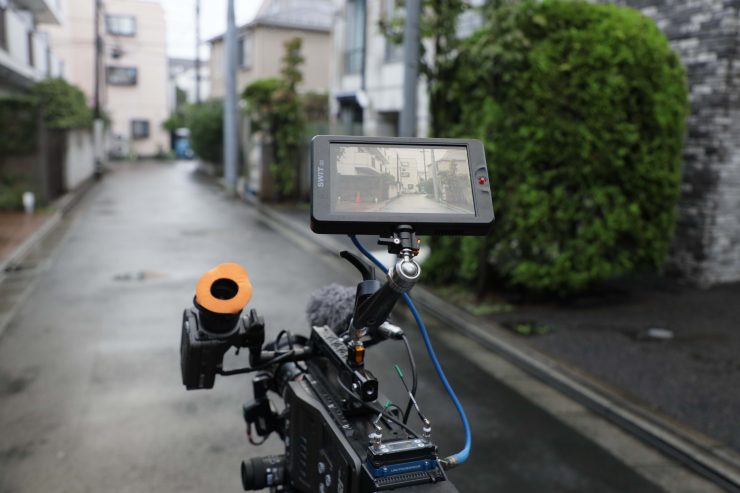
The CM-S75C has a claimed brightness of 3000 nits and a contrast ratio of 1200:1. That makes it on par with the SmallHD 703 Bolt 7″ Wireless Monitor, but it’s still not as bright as the TVLogic 7″ FHD HDR Field Monitor with 3G-SDI and HDMI 1.3 that has 3600 nits.
The inherent problem with any high bright monitor (2200 nits and above) is that they have a hard time displaying rich blacks. Often they lack a good amount of contrast and can look washed out.
This is the tradeoff that you have to live with. You can’t have your cake and eat it too.
Here are the brightness levels of some other 7″ on-camera monitors with at least 1800 nits:
- SmallHD 703 Ultrabright 2200 nits
- SmallHD 7″ Cine 7 Touchscreen On-Camera Monitor 1800 nits
- SmallHD 703 Bolt 7″ Wireless Monitor 3000 nits
- FeelWorld 7″ 4K Ultra-Bright Monitor with Loop-Through HDMI and 3G-SDI 2200 nits
- MustHD Hyper-Brite 1920 x 1200 7″ 3G-SDI/HDMI Field Monitor 2200 nits
- SWIT 7″ 3000nit Super Bright LCD Monitor 3000 nits
- ikan Saga SX7 7″ High-Brightness 3G-SDI/HDMI Field Monitor with 3D LUTs & Scopes 2200 nits
- SmallHD 703 Ultrabright 2200 nits
- SmallHD 7″ Cine 7 Touchscreen On-Camera Monitor 1800 nits
- SmallHD 703 Bolt 7″ Wireless Monitor 3000 nits
- FeelWorld 7″ 4K Ultra-Bright Monitor with Loop-Through HDMI and 3G-SDI 2200 nits
- MustHD Hyper-Brite 1920 x 1200 7″ 3G-SDI/HDMI Field Monitor 2200 nits
- SWIT 7″ 3000nit Super Bright LCD Monitor 3000 nits
- ikan Saga SX7 7″ High-Brightness 3G-SDI/HDMI Field Monitor with 3D LUTs & Scopes 2200 nits
- ANDYCINE X7S 7″ Ultra Bright 3G-SDI/HDMI 4K Monitor 2200 nits
- TVLogic 7″ FHD HDR Field Monitor with 3G-SDI, HDMI 1.3, and 3600 cd/m² 3600 nits
So is it actually 3000 nits? To check the claimed brightness of the CM-S75C I shot a white card with a light set at 5600K, and then exposed the image so it was just below 100% so there was no clipping. The monitor was set in its D65 profile.
I then took a reading from the CM-S75C using a Sekonic C-800.
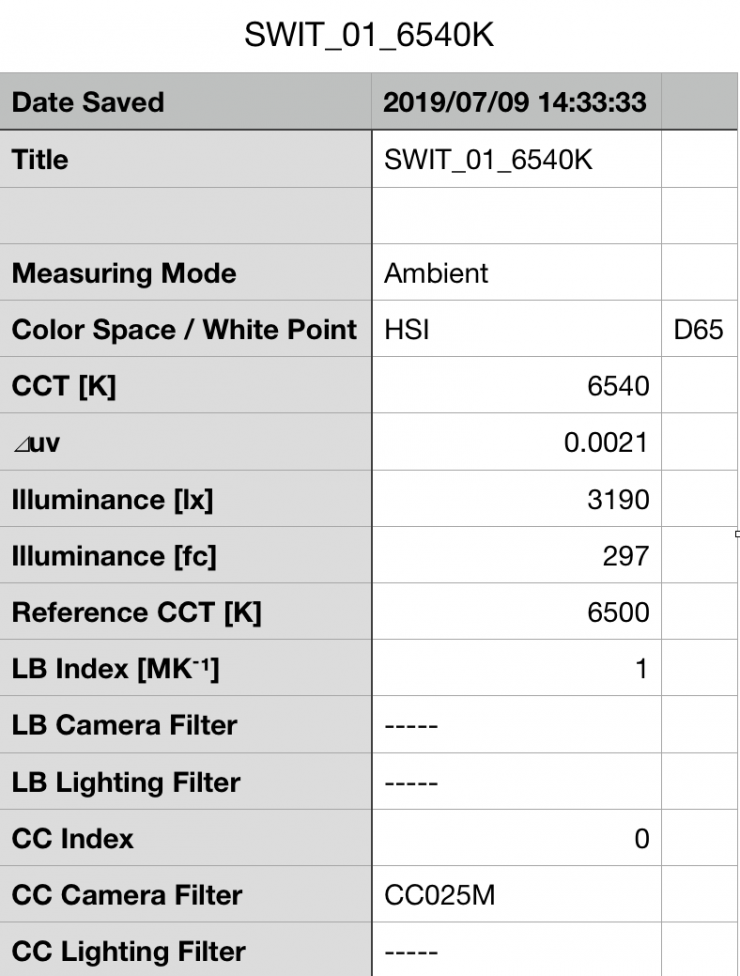
The CM-S75C gave me a reading of 3,190 lux and a Kelvin color temperature reading of 6540K. Just for reference, it had a CC score of 0. The reading of 3,190 lux exceeds SWITS claim of 3,000 lux.
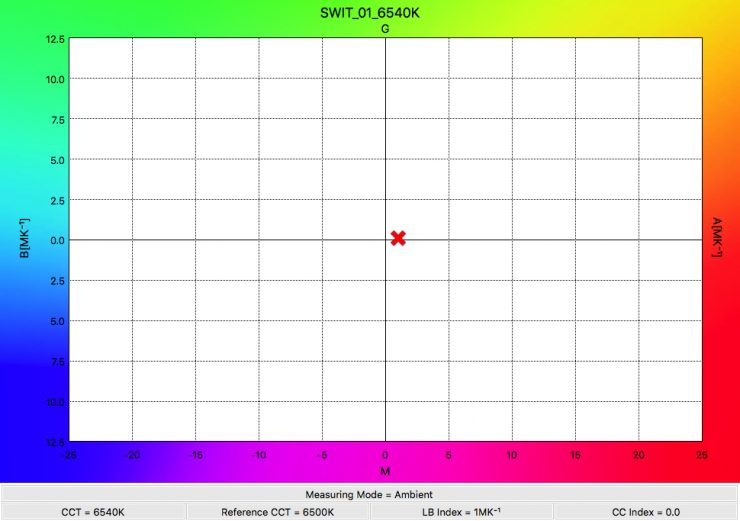
SWIT CM-S75C 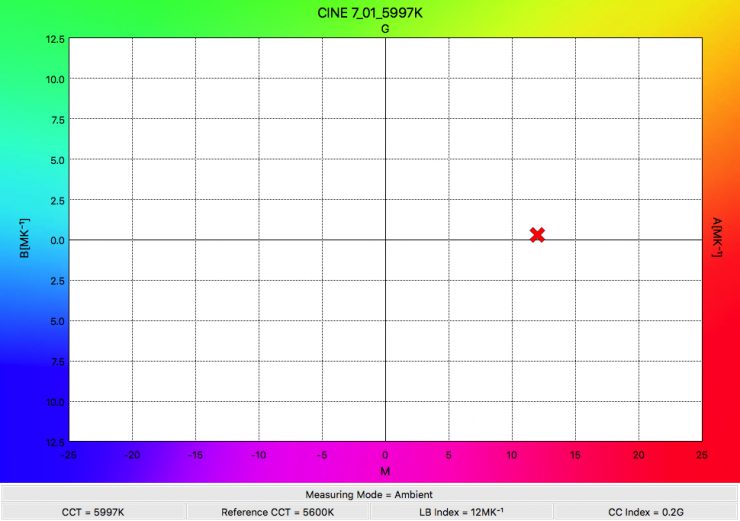
SmallHD Cine 7
As far as color accuracy is concerned, the CM-S75C recorded an almost perfect Kelvin color temperature of 6540K. This is by far the most color-accurate monitor I have tested (technically speaking). Just as a comparison, I have included the SmallHD Cine 7’s results above.
Now, you don’t technically give a monitor a CRI or a TLCI score, but, it is an easy way to see how well it is accurately replicating white.
The SWIT CM-S75C had a CRI of 83.8 and a TLCI of 79. Again, as a comparison, the SmallHD Cine 7 had a CRI of 48.3 and a TLCI of 29. The only monitor I have tested that scores higher is the Atomos Ninja V. It has a CRI of 90.6 and a TLCI of 79.
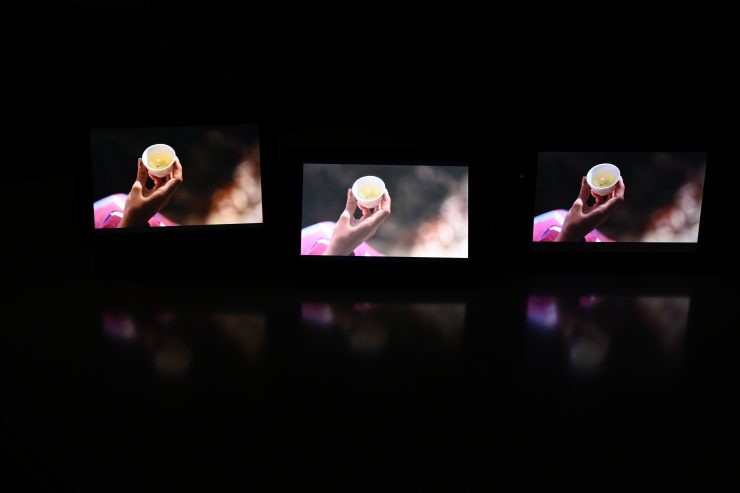
Above you can see the brightness level difference between a SmallHD Cine 7 (1800nits), the SWIT CM-S75C (3000 nits, and the Atomos Shogun Inferno (1500 nits). All of the monitors were set at their maximum brightness levels.
As you can see, to get that added brightness you sacrifice contrast and deep blacks.
You can adjust the backlight on the monitor as well as a ton of other display parameters. The monitor also allows you to auto flip the image or rotate it.
Build Quality
The build quality is pretty good, but it’s not up to the standard of a SmallHD 7″ Cine 7 Touchscreen On-Camera Monitor. It is, however, a lot better than some of the monitors from companies such as FeelWorld, ANDYCINE, and MustHD.
I would say that the SWIT has comparable build quality to an Atomos Shogun Inferno.
Design
I don’t mind the design of the CM-S75C. It is far nicer to look at (from an aesthetic point of view) than the S-1073H. It sort of reminds me of the SmallHD 702 Bright On-Camera Monitor.
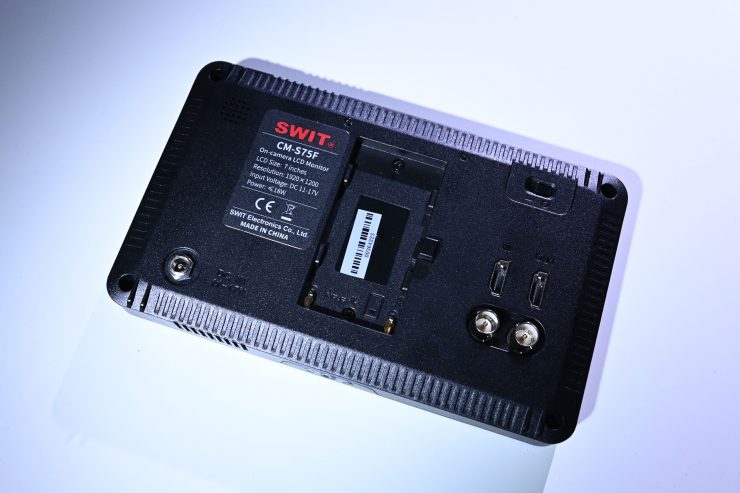
I like that the inputs and outputs are all on the back of the monitor. This means they are out of the way and it makes mounting the monitor onto a short monitor arm or mount a lot easier.
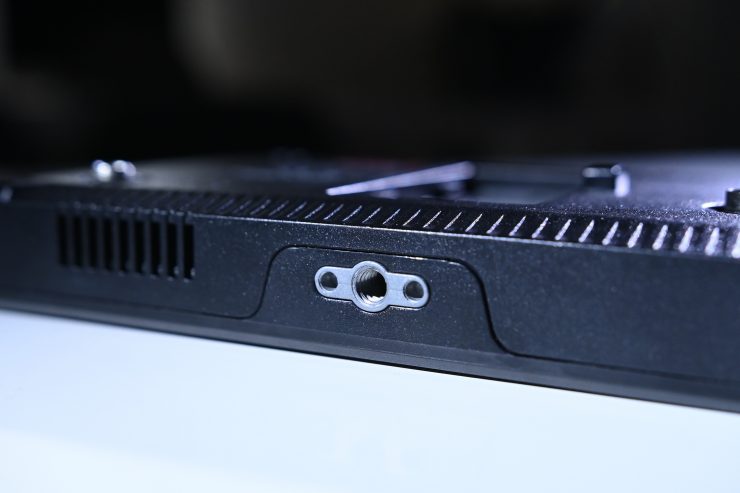
The monitor features two 1/4 20″ mounting holes (one on the top and one on the bottom) that have the ARRI standard locking pins.
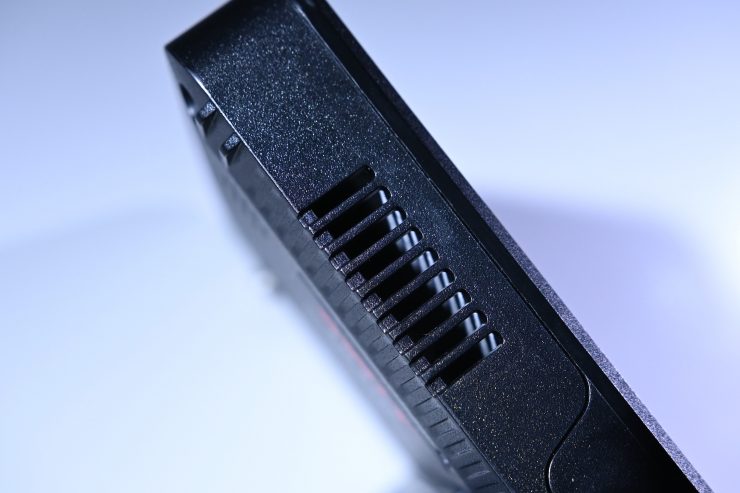
There are two vents on the monitor. One on the top, and one on the bottom.
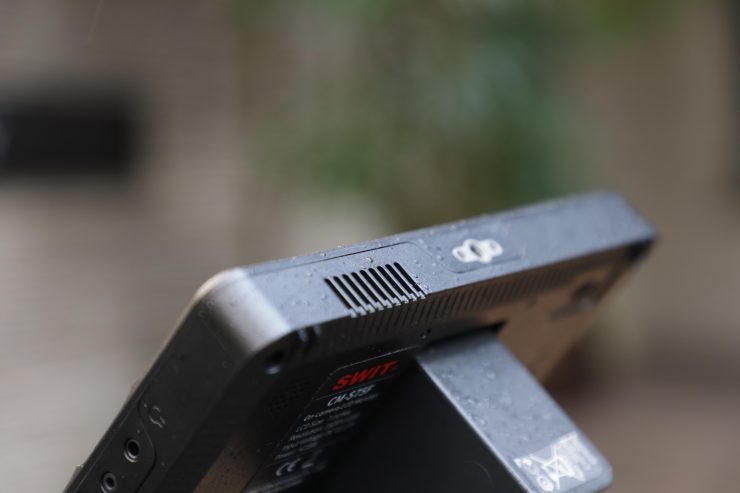
The top vent isn’t sealed so you couldn’t really use this monitor in inclement weather conditions without some sort of cover.
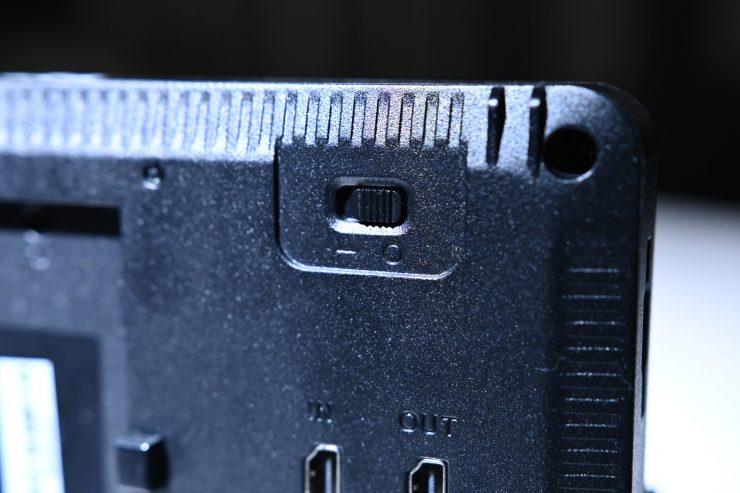
The power on/off switch is located on the back of the monitor. While it isn’t that hard to access I didn’t personally like the design. It feels like one of those power on/off switches that you would find on an old Nintendo Game Boy.
Size & Weight
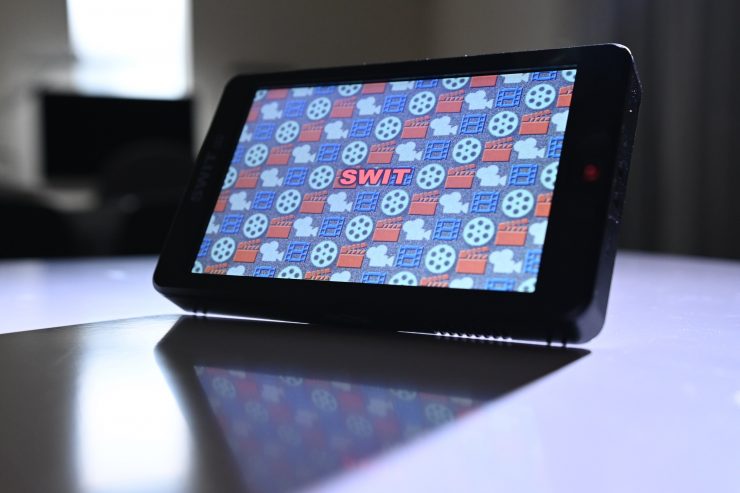
The monitor has physical dimensions of 192 mm × 116.3 mm × 24.7 mm. Without a battery, it weighs in at 450 g (15.87 oz).
How does this weight compare to say a SmallHD 7″ Cine 7 Touchscreen On-Camera Monitor? Well, the SmallHD weighs in at 567 g (20 oz) without a battery. The ANDYCINE X7S weighs in at 475g (With F970 Battery Plate).
A 7″ monitor is a lot more suited for mid and large-sized digital cinema cameras. If you are using a DSLR, mirrorless, or a small digital cinema camera you may be better suited choosing a smaller 5″ monitor.
Display Screen
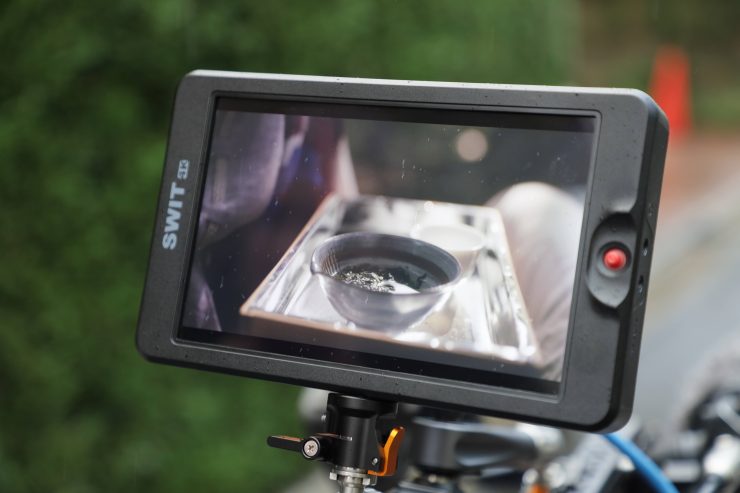
There is no pixel density listed for the monitor anywhere. It has a contrast ratio of 1200:1 and a viewing angle of 160°X160°.
Neither SWIT or OSEE states whether the panel is 8-bit or 10-bit, but it’s pretty safe to assume that it is a 10-bit (8+2 FRC) panel. A lot of companies list their monitors as 10-bit even though they are really using a 10-bit (8+2 FRC) panel. FRC stands for Frame Rate Control Technology and an 8+2 FRC panel is basically a way of trying to approximate the color reproduction of a true 10-bit panel. A true 10-bit monitor can display 1024 shades of color, whereas a 10-bit (8+2 FRC) panel can only truly display 256 shades. So what a 10-bit (8+2 FRC) panel does is artificially create in-between shades of color by quickly shifting the pixels to go between certain shades of colors.
For example, you would show the main shade of one color for 75% of the time and then another one for 25% of the time. This creates an illusion for the viewer that they are actually seeing more colors than what can actually be displayed.
Neither SWIT or OSEE lists what type of protective surface, if any, is being used on the screen.
Monitor Tools
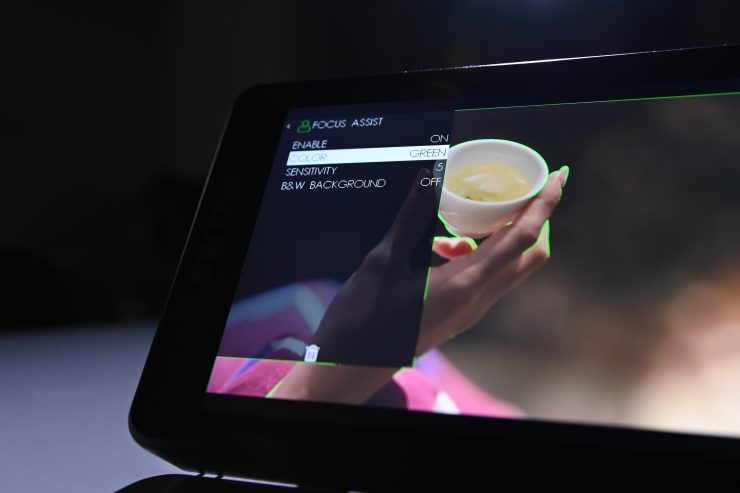
As far as display aids go, the CM-S75C has a wide array of options. There are the usual suspects such as peaking, waveform, false color, and focus assist. Below is a list of all of the display aids available.
- Image Scale
- Zebra
- Anamorphic De-squeeze
- Waveform
- Image Rotate
- Vectorscope
- Cross Hatch
- RGB Parade
- Center Marker
- Histogram
- Safe Marker
- Audio Meters
- Area Marker
- Pre-loaded LUTs for Cameras
- Focus Assist
- LUT Loaded via SD Card
- Peaking
- Firmware Upgrading
- Pixel Zoom (2X & 4X)
- False Color
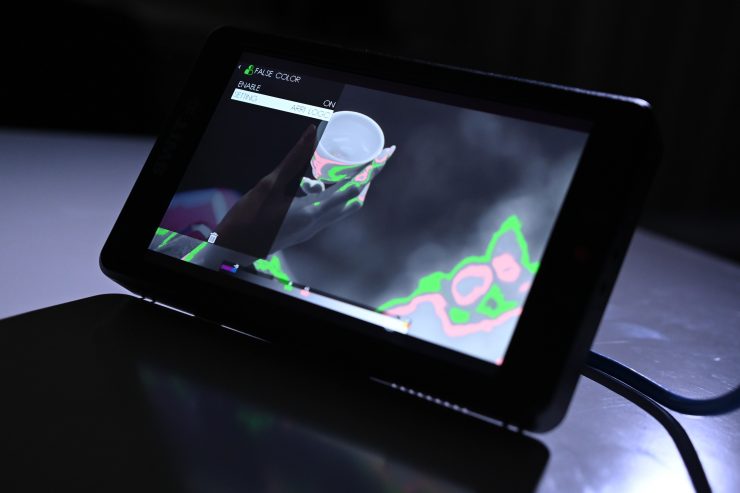
As far as false color is concerned, SWIT uses what they refer to as Super False Color Exposure Assist.
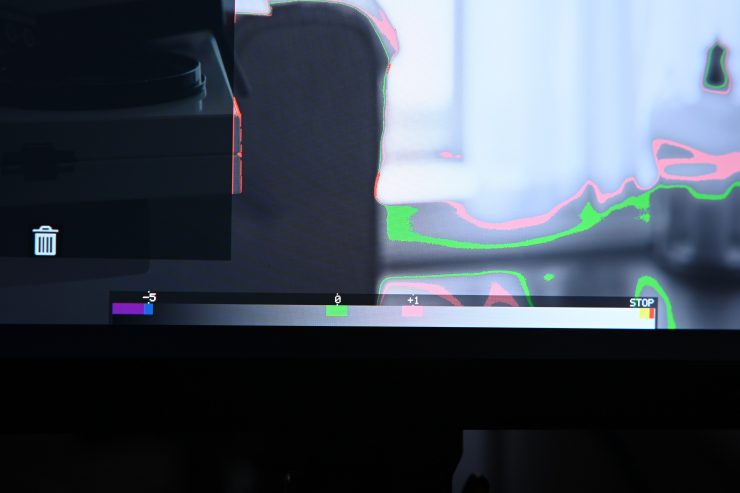
This is a fancy way of saying that the false color feature includes Under-exposure / Over-exposure /18-degree grey / Skin tone indications, to help you obtain correct exposure. The exposure indicators are calculated for different cameras. Below are the following 16 log curves that can be used for custom false color:
- SONY LC709
- SONY LC709A
- SONY S-Log2
- SONY S-Log3
- Panasonic V709
- Panasonic V-Log Original Image
- BMD
- BMD 4K
- Canon C-Log2
- Canon C-Log3
- ARRI REC709
- ARRI Log-C
- RED RG3
- RED RG4
- RED LOGFILM
- RED RL3G10
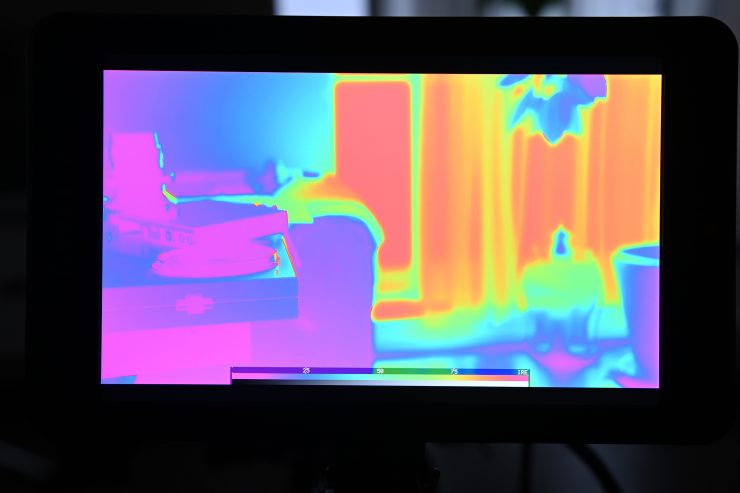
There is even a setting called Spectrum inside the false color settings where you can just see specific IRE values and the colors they represent.
The false color implementation is the best I have seen on any field monitor.
Menu System & OS
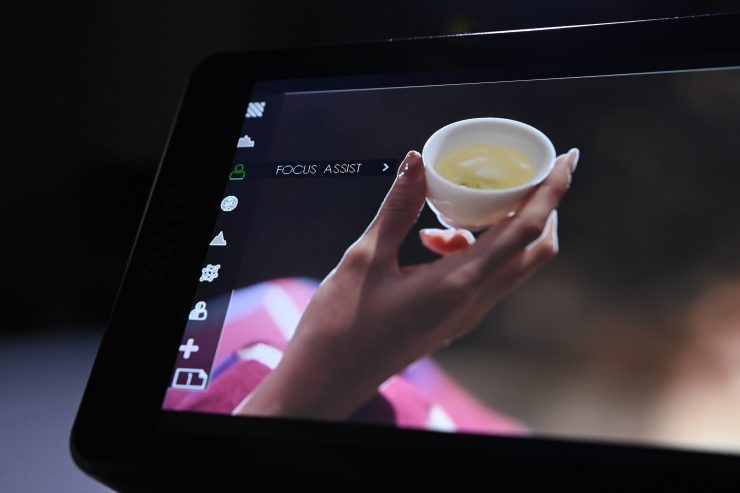
At first glance, the menu system and layout look very similar to SmallHD’s page builder. In my opinion, SmallHD’s page builder system is the gold standard for monitors, so it’s no surprise that SWIT has come up with something similar. While I am not a fan of companies copying someone else’s ideas, if you are going to base your menu system and OS on an existing product, then SmallHD is a good place to start.
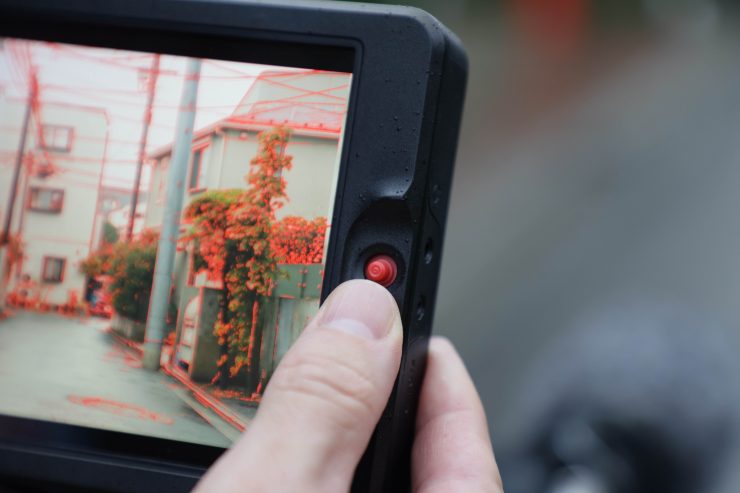
Instead of being touchscreen like most other monitors these days, the CM-S75 C uses a single 5-way joystick to navigate through the menus and OS to make changes.
The CM-S75C uses what SWIT refers to as Scene Layout Edit and Switch. Scenes are like Pages on a SmallHD. You can add up to 8 scenes and add 8 function shortcuts to each scene. Unlike a SmallHD, you can’t see all of the pages at once. You can only scroll from one to another.
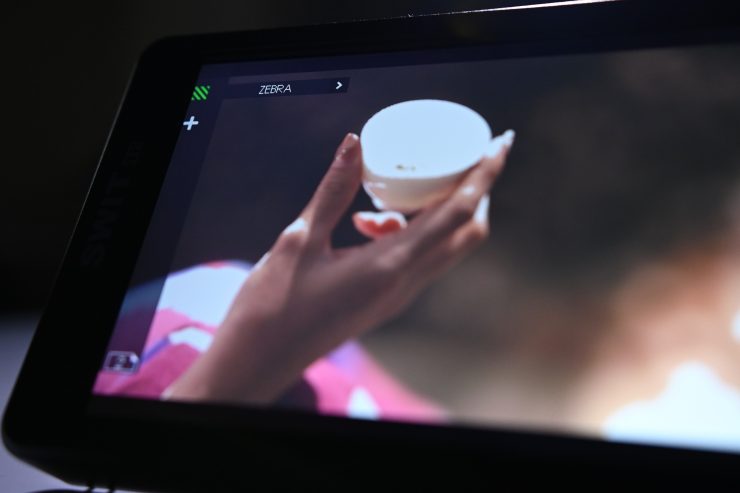
If you are familiar with SmallHD monitors you will be able to use the CM-S75. Although I like SWIT’s system, it isn’t as intuitive to use as the SmallHD.
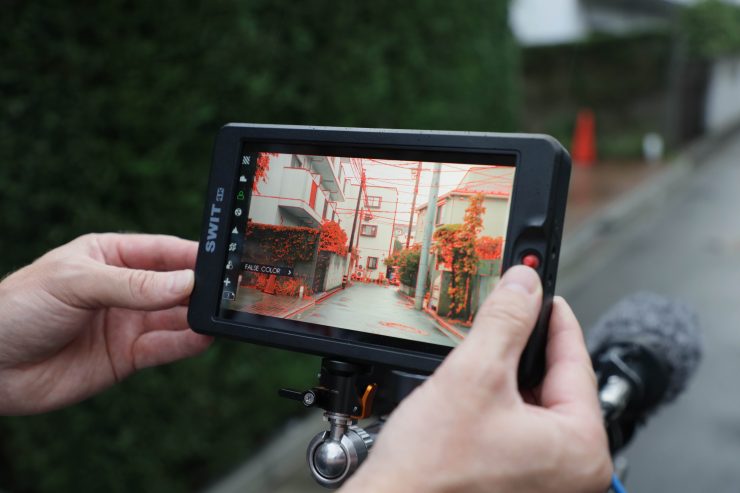
Having to use a joystick has its pros and cons. It is super quick to do focus magnification on the SWIT, and it is quite easy to turn features on and off. It is, however, slightly slower to use for going through menus and changing Scenes.
Getting to the main menu system can be tricky, and I wish SWIT would have included a simple menu button that could take you there straight away.
The 5-way joystick can be difficult to use when you are trying to do something in a hurry. I kept finding myself pushing it slightly up instead of across, or sideways when I wanted to go slightly up. This would often lead to me bringing up the wrong menu.
I think in this age of touchscreen devices, people are a lot more comfortable using monitors with this technology, instead of a joystick or a physical button. I personally prefer to have a combination of touchscreen and physical buttons.
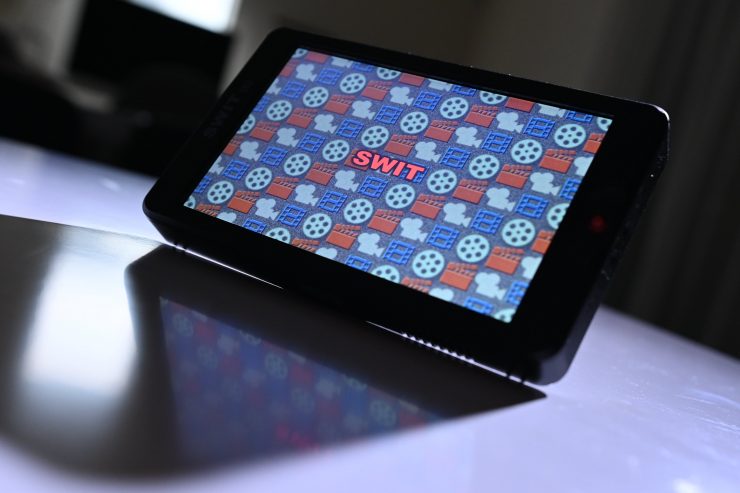
I’m not a fan of the startup screen, it looks like something you would find on a 1980’s PC.
3DLUTs
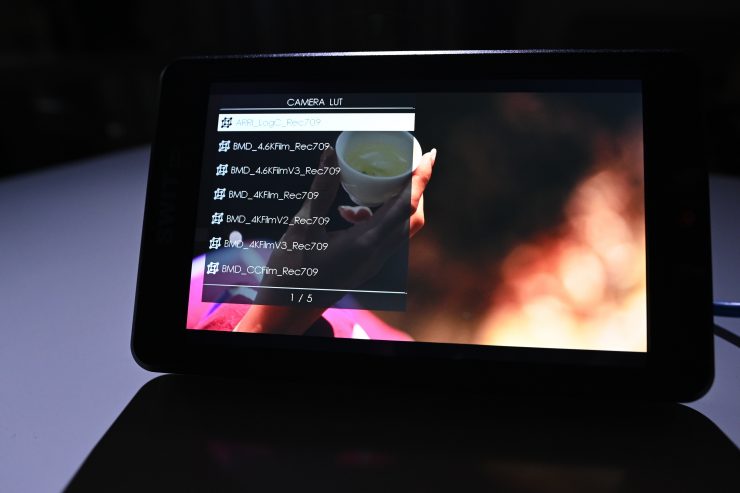
The CM-S75C monitor has 30 built-in camera Log to Rec 709 conversion LUTs, including, S-log2/3, V-log, Clog 1/2/3, Log-C, J-log1, RedLog, BMD, FujiFilm, GoPro, DJI etc.
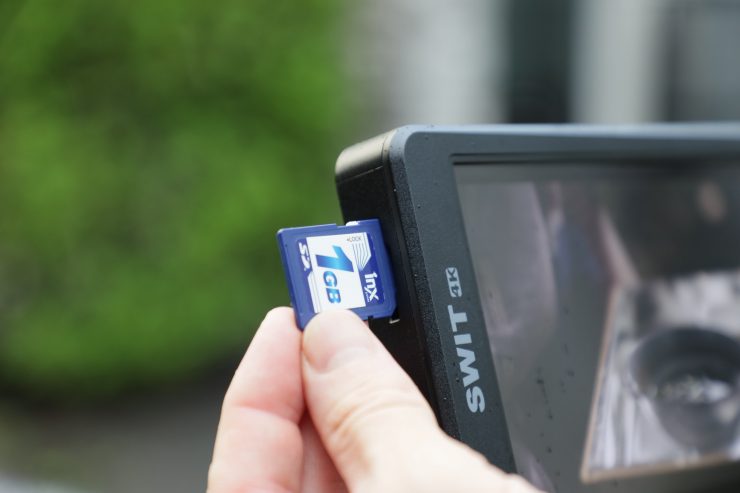
User-created 3DLUT cube or calibration 3DLUT cubes can be uploaded to the monitor via an SD card.
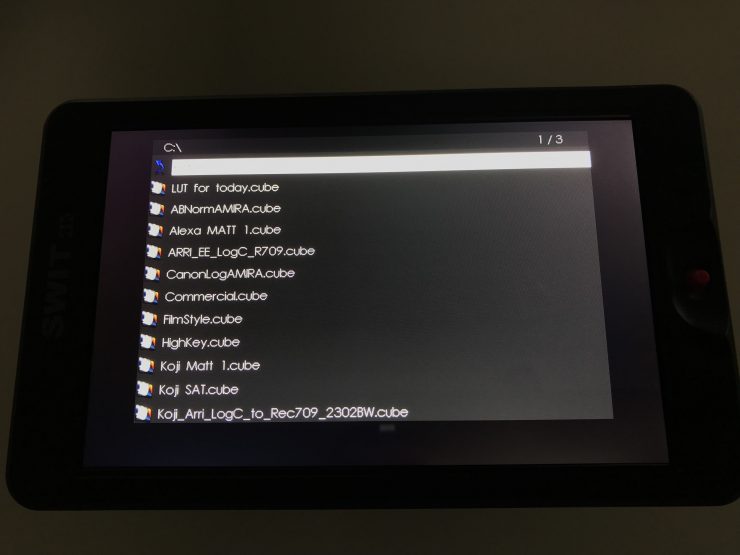
The CM-S75C can store up to 16 user-created LUTS.
Inputs/outputs
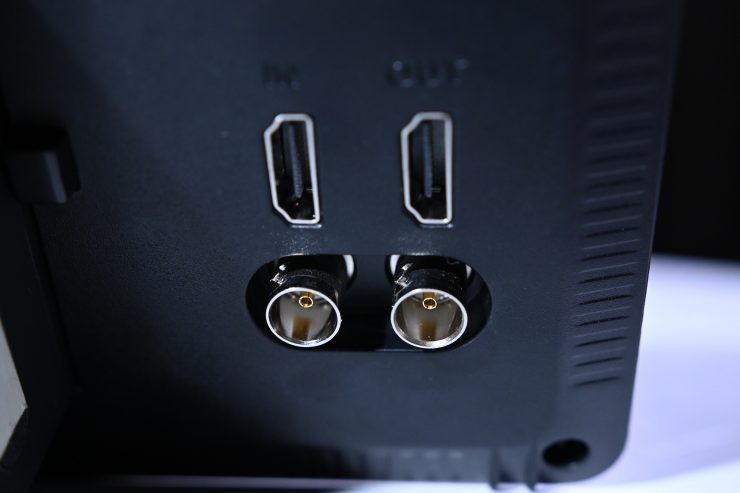
The monitor has the following inputs/outputs:
- 2K/3G/HD/SD-SDI input × 1
- 2K/3G/HD/SD-SDI loop output × 1
- HDMI 2.0 (4K60p) input × 1
- HDMI 2.0 (4K60p) loop output × 1
- 3.5mm SDI/HDMI embedded audio output
- 2.5mm Jack for control functionality
The monitor doesn’t do any cross conversion. For example, you can’t input an HDMI source and then output via SDI.
As far as real-time 4K (UHD) down-scaling is concerned, there’s a noticeable delay over HDMI if you are outputting a UHD signal from your camera. This delay is worse than if you are sending a straight 1080p signal to the monitor.
If you are recording 4K (UHD) internally in your camera you are better off selecting to have your camera output 1080p over HDMI than UHD. This certainly helps to decrease the HDMI delay, as most cameras will do a better job downscaling than a monitor will.
Audio
The monitor can display 2ch audio meters and it also has a built-in speaker which is a nice touch. The speaker works, but in all honesty, it is pretty bad quality.
There is also a 3.5mm headphone jack, although there is no way of choosing what audio channel you want to listen to.
Only displaying 2 channels of audio is not ideal, but it’s hardly a deal-breaker either.
Power
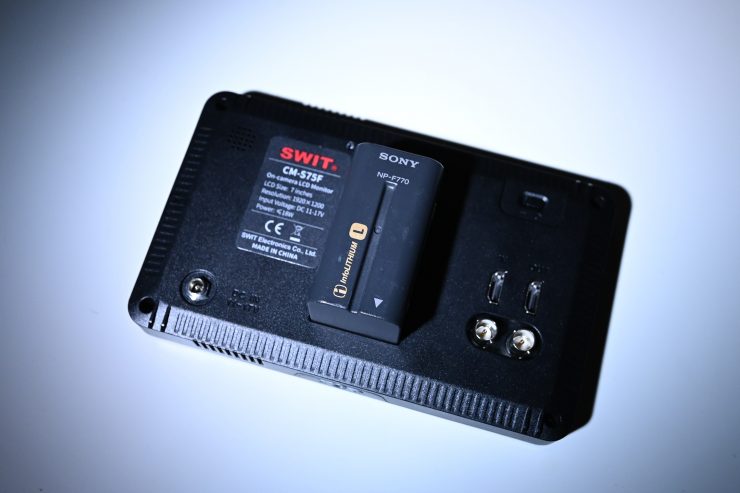
The CM-S75C supports DC IN 11~17VDC and it has a power consumption of just 18.8W which although high, is on par with some of the other high bright monitors.
As a comparison, the 2200 nit SmallHD 703 Ultrabright draws 13W, and the 2200 nit FeelWorld 7″ 4K Ultra-Bright Monitor with Loop-Through HDMI and 3G-SDI draws 18W.
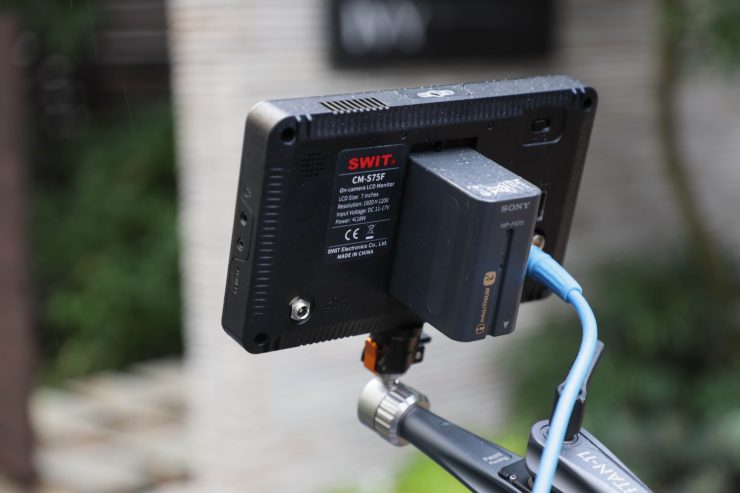
The monitor can be powered off a Sony NP series battery via a built-in battery plate. SWIT also have options available for both V-mount and Gold mount battery plates.
I found that the Sony NP series battery plate was well made and there wasn’t any wobble present. I have seen numerous battery plates on monitors where the battery never locks in properly.
The only caveat to the powering is that there is only a single battery plate. A good proportion of today’s 7″ monitors have battery plates so you can use two batteries.
The monitor also comes with a mains power supply.
Power up time
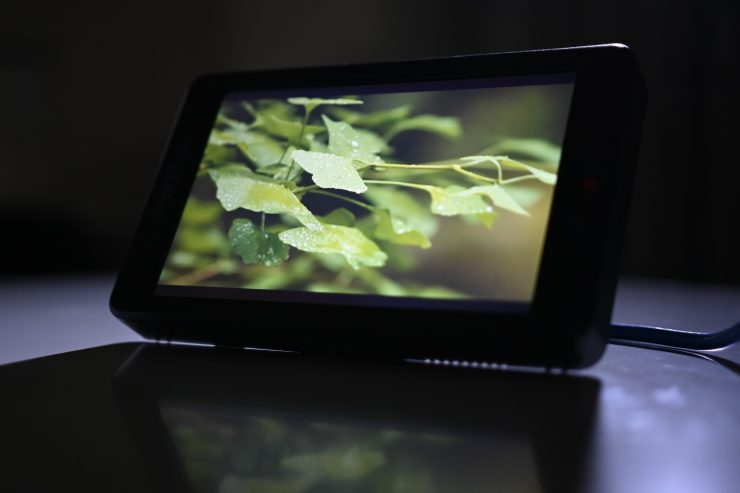
I hate monitors or products that take too long to boot up before you can use them. The CM-S75C is not that quick to boot up. I timed it at about 9 seconds from the time I turned it on till I got a picture up on the screen.
Heat?
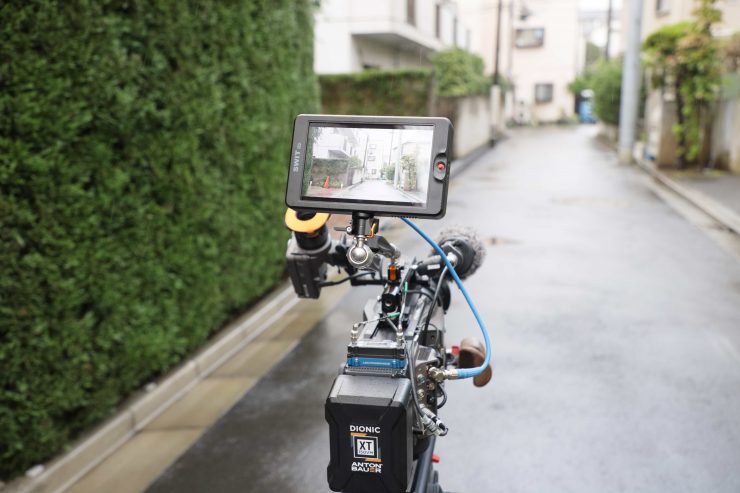
Most modern-day monitors generate a lot of heat, especially ones that have over 1800 nits of brightness.
The SWIT doesn’t look like it has any sort of fan, nor does it have any obvious heat sinks. Instead, there are two vents that disperse the heat generated by the monitor. The benefit of this is there is absolutely no noise, the downside is the unit does get hot, and it is exposed to the elements.
While it does get hot, I found that the amount of heat being generated wasn’t that bad.
In all honesty, I would prefer a bit of heat over a noisy fan that interferes with the recording of audio.
HDR
According to SWIT, the CM-S75C supports HLG/PQ HDR video display, however, there are no direct settings anywhere in the menu that let you select HLG/PQ.
No Fingerprints
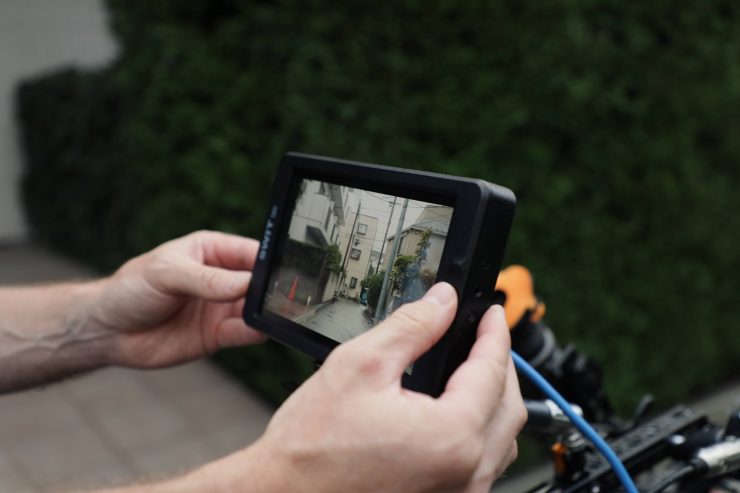
The CM-S75C isn’t a touchscreen, so you don’t get fingerprint marks all over it. This is a very common problem on all of the touchscreen monitors that are available.
How does the monitor actually look & perform?
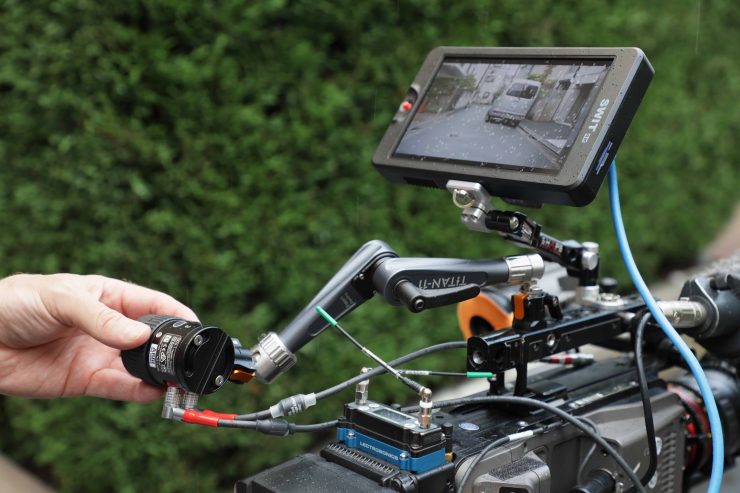
The CM-S75C certainly ticks a lot of boxes when it comes to specifications and features, but how does that transfer over to the real world?
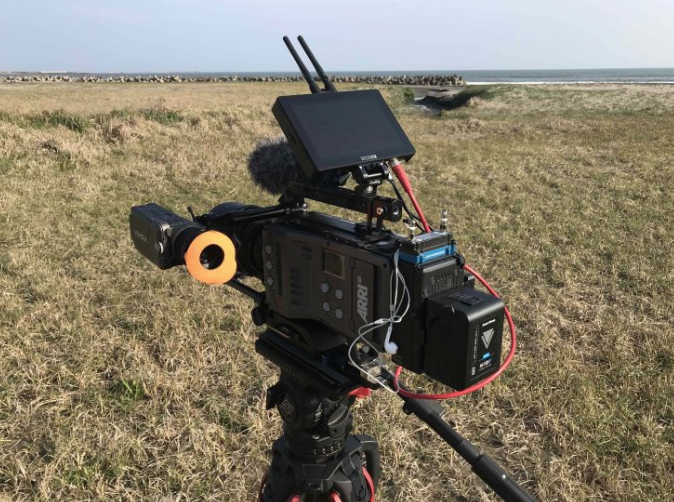
My current favorite monitor is the SmallHD 7″ Cine 7 On-Camera 500 TX Monitor (L-Series). It’s color accurate, has a nice bright display, it has a built-in Teradek Bolt TX, camera control, it’s well built, and it has a great OS.
While I’m not looking to replace that monitor anytime soon, I wanted to see how the CM-S75C compares to the Cine 7 as far as color accuracy, operating system, and the user experience are concerned.
I was impressed by the CM-S75C. It is super bright, it displays accurate colors and it has a host of great monitoring tools and features.
While the brightness is great, the monitor does have a hard time displaying deep blacks, but in saying that, this seems to be a problem faced by all high bright monitors. This was the same complaint I had when I reviewed the SmallHD Bolt 703. This is why I personally find the SmallHD Cine 7 such a good monitor. I think it strikes the right balance between brightness and contrast.
The OS is a lot better than most other monitors, but it’s not quite as good as that of a SmallHD.
I like that the monitor uses the 1/4 20″ mounting points with the ARRI standard locking pins. I hate having monitors twist around and come loose.
A good monitor should stay out of your way and not make your shooting experience more difficult.
Does accuracy really matter?
This may sound like a ridiculous question to ask, but with everyone watching content on different screens and types of screens, it’s a legitimate question.
Just because you are basing color accuracy, brightness, and contrast off whatever monitoring or grading monitor you are using there is very little chance that it is going to be seen by someone as intended unless it happens to be shown in a movie theatre (and even then there is still variables).
In the case of giving a monitor to a director, producer, or client, does it really need to be super accurate? That answer is really going to depend on the level of production. For me personally, I would rather try and provide the best image possible so that a director, producer, or client knows exactly what they are getting.
Competition
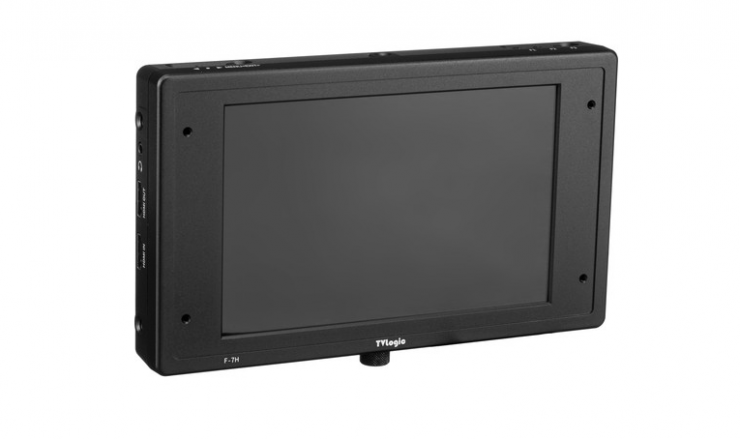
So what is the CM-S75C competing against? Well, in terms of 7″ SDI monitors with at least 1800 nits, there are more options than you may think.
- SmallHD 703 Ultrabright $2,699.10 USD
- SmallHD 7″ Cine 7 Touchscreen On-Camera Monitor $1,799 USD
- SmallHD 703 Bolt 7″ Wireless Monitor $3,999 USD
- FeelWorld 7″ 4K Ultra-Bright Monitor with Loop-Through HDMI and 3G-SDI $339 USD
- MustHD Hyper-Brite 1920 x 1200 7″ 3G-SDI/HDMI Field Monitor $449.99
- SWIT 7″ 3000nit Super Bright LCD Monitor $1,180 USD
- ikan Saga SX7 7″ High-Brightness 3G-SDI/HDMI Field Monitor with 3D LUTs & Scopes $980 USD
- ANDYCINE X7S 7″ Ultra Bright 3G-SDI/HDMI 4K Monitor $399 USD
- TVLogic 7″ FHD HDR Field Monitor with 3G-SDI, HDMI 1.3, and 3600 cd/m² $1,980 USD
Price & Availability
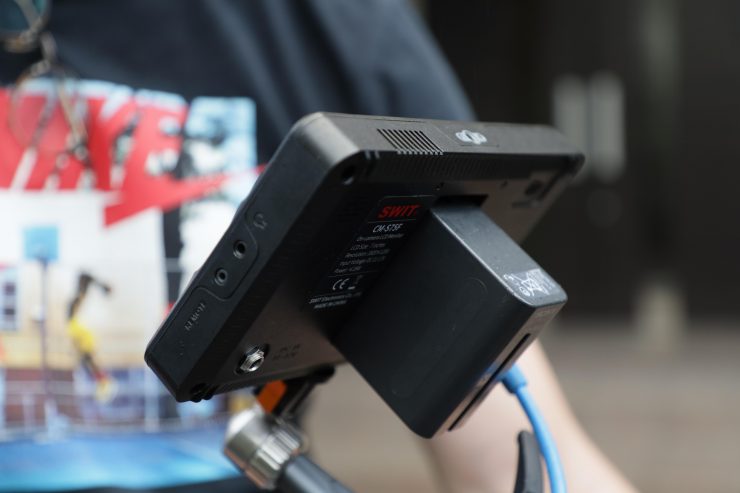
Depending on where you are and what shop you like to buy your camera gear from, the monitor could be branded as either SWIT or OSEE.
B&H currently has the monitor listed at $899 USD. There is an HDMI only version available for $499 USD.
If you are in Australia you can pre-order the monitor from Lemac.
At $899 I think the monitor offers good value for money. Yes, it’s more expensive than a FeelWorld, or ANYCINE, but it’s also a lot more affordable than offerings from SmallHD and TVLogic. The SWIT does a good job at filling that void between very inexpensive monitors and the high-end offerings.
Conclusion
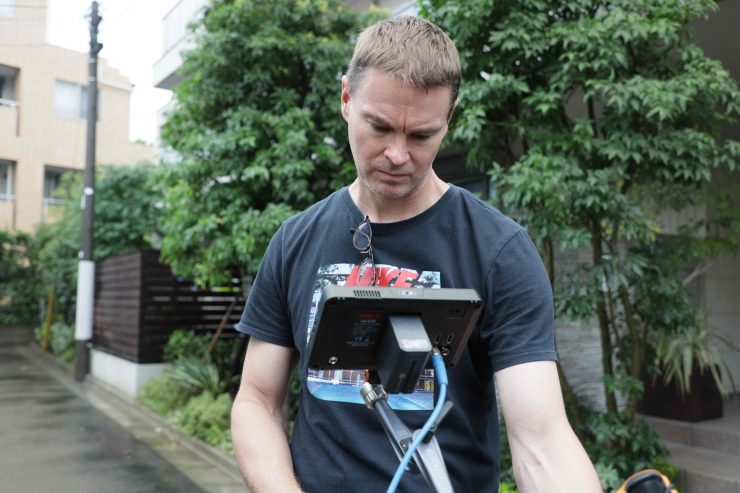
Because it has SWIT or OSEE written on it, there is going to be a lot of pre-conceived bias that this is just another ‘Chinese’ monitor. From my testing that couldn’t be further from the truth.
The CM-S75C is super bright, it has a ton of features, and most importantly, it displays very accurate colors. The only downside and this applies to all of the high bright monitors is that because the backlight is being pushed so hard you aren’t going to get nice rich blacks.
I really like the custom false color function where you can tell the monitor exactly what camera you are using so it can display false color accurately. Too many monitors don’t have this ability and anytime you are looking at false color it’s a crapshoot as to what you are actually seeing.
Having 30 in-built Log to REC709 LUTS is also extremely useful, as is the ability to load up your own LUTs.
The operating system is good, but not great. The same can be said about the build quality.
There really is a lot to like about the CM-S75C. SWIT has done a really good job of making a color accurate, daylight viewable monitor that strikes just the right balance of performance and price.
In my opinion, at $899 USD it represents good value for money when you compare it against other high bright monitors that are currently available.
The SWIT is only the second monitor I have ever used that is truly visible outdoors no matter how bright it may be. It is definitely worth considering if you are looking for a monitor to use in extremely bright conditions.

